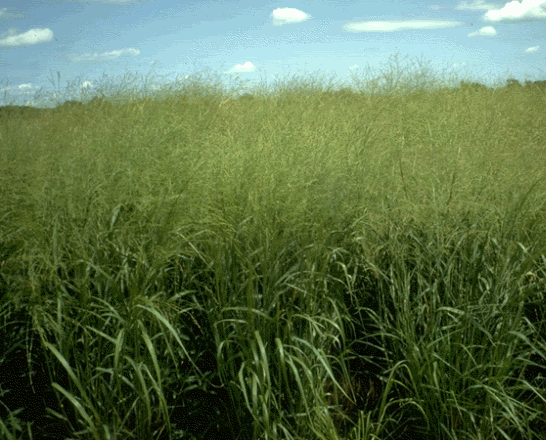Did civilization arise out of catastrophic climate change?
 The United Nations Climate Change Conference is being held in Nairobi, Kenya, this week. It is already being dubbed the 'adaptation summit' because focus has radically shifted away from preventing climate change towards adapting to it. Efforts are under way to devise strategies that must allow the most vulnerable countries (mainly in the developing world) to cope with the effects of what's seen as the greatest threat mankind has ever faced.
The United Nations Climate Change Conference is being held in Nairobi, Kenya, this week. It is already being dubbed the 'adaptation summit' because focus has radically shifted away from preventing climate change towards adapting to it. Efforts are under way to devise strategies that must allow the most vulnerable countries (mainly in the developing world) to cope with the effects of what's seen as the greatest threat mankind has ever faced.This change in discourse reminded us of a recent hypothesis launched by archaeologist Dr. Nick Brooks of the University of East Anglia, who has written extensively on cultural changes as a result of adaptations to climate change in the Sahel, and on the archaeology of Sahara cultures. His hypothesis comes down to the simple but profound idea that severe climate change was the single most important driver in the development of civilisation as we know it.
Dr. Brooks notes that the early civilisations of Egypt, Mesopotamia, South Asia, China and northern South America were founded between 6000 and 4000 years ago when global climate changes, driven by natural fluctuations in the Earth's orbit, caused a weakening of monsoon systems resulting in increasingly arid conditions. These first large urban, state-level societies emerged because diminishing resources forced previously transient people into close proximity in areas where water, pasture and productive land was still available.
Civilization: an accidental by-product of climate catastrophes
In a presentation to the BA Festival of Science on September 7, Dr. Brooks challenged existing views of how and why civilisation arose. He argued that the earliest civilisations developed largely as a by-product of adaptation to climate change and were the products of hostile environments.
Civilisation did not arise as the result of a benign environment which allowed humanity to indulge a preference for living in complex, urban, 'civilized' societies. On the contrary, what we tend to think of today as 'civilisation' was in large part an accidental by-product of unplanned adaptation to catastrophic climate change. Civilisation was a last resort - a means of organising society and food production and distribution, in the face of deteriorating environmental conditions.He stressed that for many, if not most people, the development of civilisation meant a harder life, less freedom, and more inequality. The transition to urban living meant that most people had to work harder in order to survive, and suffered increased exposure to communicable diseases. Health and nutrition are likely to have deteriorated rather than improved for many:
-- Dr. Nick Brooks.
 bioenergy :: biofuels :: energy :: sustainability :: climate change :: catastrophe :: archaeology :: civilisation :: adaptation ::
bioenergy :: biofuels :: energy :: sustainability :: climate change :: catastrophe :: archaeology :: civilisation :: adaptation ::The new research challenges the widely held belief that the development of civilization was simply the result of a transition from harsh, unpredictable climatic conditions during the last ice age, to more benign and stable conditions at the beginning of the Holocene period some 10,000 years ago.
Civilization, not our natural state
The research also has profound philosophical implications because it challenges deeply held beliefs about human progress, the nature of civilisation and the origins of political and religious systems that have persisted to this day. It suggests that civilisation is not our natural state, but the unintended consequence of adaptation to climatic deterioration - a condition of humanity "in extremis".
Dr. Brooks said: "Having been forced into civilized communities as a last resort, people found themselves faced with increased social inequality, greater violence in the form of organised conflict, and at the mercy of self-appointed elites who used religious authority and political ideology to bolster their position. These models of government are still with us today, and we may understand them better by understanding how civilisation arose by accident as a result of the last great global climatic upheaval."
It is tempting to use Dr. Brooks' hypothesis to imagine what our own global future might look like, now that climate change promises to have an impact on many of us, especially on people in the developing world. Such an exercise would be grossly anachronistic, but still worth the effort.
More information:
Dr. Brooks has written on climatically-driven environmental change and cultural change in the Middle Holocene (from around 7000 to 4000 years before present), focusing on the consequences of increased aridity in the northern hemisphere sub-tropical and extra-tropical desert belt. In particular this work focuses on the role of climatic and environmental change in the emergence of complex societies characterised by a high degree of urbanisation, social differentiation and stratification, and the presence of state-level institutions. The project is based largely on a synthesis of previously published archaeological and palaeoenvironmental data, and is informed by ongoing geoarchaeological research in the Sahara (see Western Sahara and Fezzan Projects).
Brooks, N. 2005. Cultural responses to aridity in the Middle Holocene and increased social complexity [*.pdf], Quaternary International.
Brooks, N. 2004. Beyond collapse: the role of climatic desiccation in the emergence of complex societies in the middle Holocene [*.pdf], In Leroy, S. and Costa, P. (Eds.) Environmental Catastrophes in Mauritania, the Desert and the Coast. Abstract Volume and Field Guide. Mauritania, 4-18 January 2004. First Joint Meeting of ICSU Dark Nature and IGCP 490.
Article continues
 -------------------
-------------------
 Spanish company Ferry Group is to invest €42/US$55.2 million in a project for the production of biomass fuel pellets in Bulgaria.
The 3-year project consists of establishing plantations of paulownia trees near the city of Tran. Paulownia is a fast-growing tree used for the commercial production of fuel pellets.
Spanish company Ferry Group is to invest €42/US$55.2 million in a project for the production of biomass fuel pellets in Bulgaria.
The 3-year project consists of establishing plantations of paulownia trees near the city of Tran. Paulownia is a fast-growing tree used for the commercial production of fuel pellets.

 Canadian renewable energy researchers are following in the footsteps of their European collegues by focusing efforts on using grass species for the production of biogas and solid biofuels that can be used as a transport fuel and for electricity production. According to the researchers, this offers a much more efficient bioenergy production path. In Europe, several experiments are already underway aimed at producing biogas from dedicated herbaceous energy crops (
Canadian renewable energy researchers are following in the footsteps of their European collegues by focusing efforts on using grass species for the production of biogas and solid biofuels that can be used as a transport fuel and for electricity production. According to the researchers, this offers a much more efficient bioenergy production path. In Europe, several experiments are already underway aimed at producing biogas from dedicated herbaceous energy crops (







Wednesday, November 15, 2006
Car manufacturers, oil industry, agricultural federations sign France's ambitious biofuels charter
The signing of the charter means that the car manufacturers are committing to building vehicles capable of running on E85 fuel and on biodiesel. The manufacturers will:
- commercialise at least one flex-fuel vehicle each, from 2007 onwards and progressively increase the number of models over the years thereafter
- introduce the flex-fuel vehicles at a price that compares favorably to similar gasoline models
- develop a marketing strategy and a service industry necessary for this new market segment
- ensure that research and development efforts in automotive biofuel systems result optimal and highly efficient fuel and engine systems
Renault has pledged that by 2009, 50% of the gasoline cars it manufactures will be of the flex-fuel type, whereas all its diesel cars will be capable of running on biodiesel (B30). Likewise, Volvo has announced that its C30, S40 and V50 models will all see a flex-fuel version next year.The French state for its part:
- will stimulate the constrution of 500 green fuel stations by the end of next year, andstart offering E85 to the French public from january 2007 onwards
- will ensure that policies aimed at facilitating the production and marketing of the fuels are implemented;
- has created a system of fiscal incentives to attract investments in the biofuels sector;
- and has committed itself to buying biofuel capable cars (15% of all the state's cars in 2007, and 30% in 2008)
The signing of the charter comes after a recent study which showed that almost none of the European car manufacturers had achieved the efficiency targets they had earlier pledged to reach:This time, it seems like the French state and manufacturers are more seriously committed to the effort. Fuel distributors and agricultural cooperatives have been involved as well. The charter was equally signed by French oil giant Total, which aims to build 200 to 250 green fuel stations across France next year and 700 by 2009. The government's official target is to have 500 green stations online next year, out of a total of - if successful, this would be a major achievement and make France Europe's leading biofuel nation.
Total is cooperating with agri-cooperatives to ensure adequate supplies of biofuel feedstocks. The 'Syndicat National des Producteurs d'Alcool Agricole' (SNPAA) and the 'Fédération Nationale des Syndicats d'Exploitants Agricoles' (FNSEA) as well as other agricultural federations are signatories too.
Article continues
posted by Biopact team at 5:40 PM 0 comments links to this post